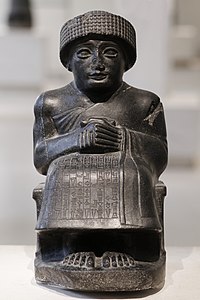Sudra (headdress)

The sudra (Aramaic: סודרא suḏārā; Hebrew: סוּדָר sudār) is a rectangular piece of cloth that has been worn as a headdress, scarf, or neckerchief in ancient Jewish tradition. Over time, it held many different functions and is today sometimes understood to be of great cultural and/or religious significance to Jews.
It is mentioned in various ancient and medieval Jewish and Christian religious texts in Aramaic and Koine Greek, written in or around the Near East. Among them are the Gospel of Luke, the Targum Neofiti, the Peshitta, the Babylonian Talmud (this text makes numerous mentions of the sudra and is an important source for the role it played in Jewish life at the time), and the Targum Pseudo-Jonathan.
Etymology
The English sudra derives from Jewish Aramaic סודרא. It in turn derives from the
The Babylonian Talmud presents what Jastrow calls a "
History
Prominence in the ancient Near East
The exact historical origins of wearing a piece of

In Judea and the Roman Empire
The sūdārium was kept much like a pocket handkerchief but mainly used for wiping away sweat, as the name implies. It was a modern invention around the time of
Mesopotamia
In the 5th century when the
Katz, Houtman, and Sysling provide insight as to why a burial cloth, as well as a headdress would be called by the same name. While discussing the meaning of
Babylonian Talmud
The
Styles
The Babylonian Talmud states fashions of wearing the garment, as well as who wore it. Several tractates thereof describe it as being wrapped around one's head.[4][30] Berakhot 60b:5 additionally provides a prayer to be recited upon attiring the garment in this fashion ברוך ... עוטר ישראל בתפארה.[31]

Another fashion of wear mentioned therein is wearing the sudra around one's neck, Marcus Jastrow suggests that it also had been worn over one's arms. The Orach Chayim section of the Shulchan Aruch, a collection of Jewish religious law from 1565, states that the Arabic name of the sudra worn this way is שי"ד; סודר שנותנין על הצואר במלכות א"י שנקרא בערבי שי"ד וכן ביק"א שהיו נותנין בספרד על כתפיהם פטורים, lit. 'A sudra which is worn upon the neck in the kingdom of the Land of Israel named in Arabic Šīd, also the Bīqa, which was worn in Sephard (Spain) over their shoulders are exempt [from the requirement of tzitzit]'.[32][26][33] The 10th century commentator Rashi states: וסודר שבצוארו - ותלויין ראשיו לפניו לקנח בו פיו ועיניו, lit. 'And the Sudra is arranged on one's neck – and the ends thereof were used to wipe one's mouth or eyes' commenting on this passage.[34][26]
According to Lier, Targumim suggest Moses wore a sudra on his head, specifically his radiant forehead. Concealing the nature of the Israelite god, except when revealing the Ten Commandments, when he is meant to have removed his sudra from his forehead according to Lier.[29]
There is textual evidence for its use as footwear.[4][38]
Decline
Amongst
See also
- Sudarium – Roman garment conceptually related
- Priestly turban – Ancient Jewish headdress
- Keffiyeh – Similar regional headdress
- Shtreimel – Jewish fur headdress
Notes
References
- S2CID 239370393.
- ISBN 978-90-04-30488-8, retrieved 2022-09-18
- ^ a b "A Dictionary of Greek and Roman Antiquities (1890), SUDARIUM". www.perseus.tufts.edu. Retrieved 2021-09-12.
- ^ OCLC 1015128901.
- ^ "Jastrow, סוּדָרָא 1". www.sefaria.org. Retrieved 2022-09-20.
- ^ "Shabbat 77b:11". www.sefaria.org. Retrieved 2022-09-16.
- ^ OCLC 18723697.
- ^ Ethnic Dress in the United States: A Cultural Encyclopedia, page 293, Annette Lynch, Mitchell D. Strauss, Rowman & Littlefield
- ISBN 978-0-521-09749-9. Retrieved 17 April 2013.
traditional Jewish head-dress was either something like the Arab's Keffiyeh (a cotton square folded and wound around a head) or like a turban or stocking cap
- ^ "Luke 19:20, Novum Testamentum Graece (NA28)". www.academic-bible.com. Retrieved 2021-09-12.
- ^ Nic Fields, The Roman Army of the Principate 27 BC-AD 117 (Osprey, 2009), p. 25.
- ^ Daniel K. Hall, How to Tie a Tie: Choosing, Coordinating, and Knotting Your Neckwear (Sterling, 2008), p. 8.
- ^ Oscar Lenius, The Well-Dressed Gentleman (LIT Verlag Münster, 2010), p. 93.
- ^ "The Comprehensive Aramaic Lexicon". cal.huc.edu. Retrieved 2022-09-20.
- ISBN 9783515082419.
- ISBN 978-90-04-17842-7.
- JSTOR 24328443.
- ^ "Shabbat 148b:1". www.sefaria.org. Retrieved 2022-09-18.
- ^ "Sukkah 26a:14". www.sefaria.org. Retrieved 2022-09-18.
- ^ "Sanhedrin 48a:5". www.sefaria.org. Retrieved 2022-09-18.
- ^ "Gittin 68a:1". www.sefaria.org. Retrieved 2022-09-18.
- ^ "Bava Metzia 7a:9". www.sefaria.org. Retrieved 2022-09-16.
- ^ "Bava Kamma 119b:14". www.sefaria.org. Retrieved 2022-09-16.
- JSTOR 24331408.
- JSTOR 24164401.
- ^ a b c "Jastrow, סוּדָר". www.sefaria.org. Retrieved 2022-09-16.
- ^ "Avodah Zarah 4a:11". www.sefaria.org. Retrieved 2021-09-12.
- ^ "The Comprehensive Aramaic Lexicon – TgPsJon Exod chapter 21:16". cal.huc.edu. Retrieved 2022-09-16.
- ^ ISBN 978-90-04-52138-4.
- ^ "Berakhot 51a:20". www.sefaria.org. Retrieved 2022-09-16.
- ^ "Berakhot 60b". www.sefaria.org. Retrieved 2022-09-16.
- ^ "Shulchan Arukh, Orach Chayim 10:10-12". www.sefaria.org. Retrieved 2021-09-14.
- ^ "Shabbat 120a:8". www.sefaria.org. Retrieved 2022-09-16.
- ^ "Rashi on Shabbat 120a:8:12". www.sefaria.org. Retrieved 2022-09-16.
- ^ "Tosefta Kifshutah on Shabbat 5:11:1". www.sefaria.org (in Hebrew). Retrieved 2022-09-16.
- ^ Goetz, Georg (1894). CORPVS GLOSSARIORVM LATINORVM (in Latin). Leipzig: SOCIETATIS LITTERARVM REGIAE SAXONICAE. p. 12.
- OCLC 909831201.
- ^ "Yevamot 102b:19". www.sefaria.org. Retrieved 2022-09-18.
- OCLC 44706373.
- ISBN 9004096841.
